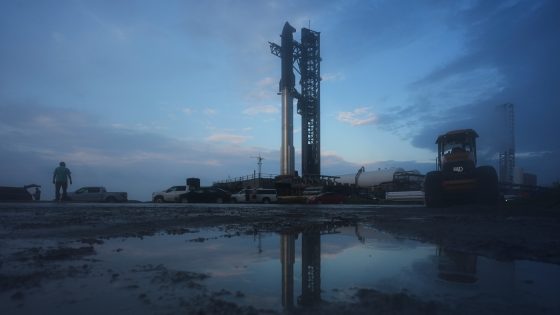SpaceX’s mega rocket Starship is set for another test flight, but enthusiasts will have to wait longer as the launch was postponed on August 25, 2025. This marks the 10th attempt for the largest rocket ever built, highlighting ongoing challenges in the ambitious Starship program.
- SpaceX's Starship test flight delayed again.
- Troubleshooting ground systems caused launch halt.
- Starship aims for moon landing by 2027.
- Elon Musk remains optimistic despite failures.
- SpaceX supports NASA with ISS resupply missions.
- Previous rockets faced similar development challenges.
Initially scheduled for a one-hour window on Sunday evening, SpaceX announced via social media that the launch was halted due to a ground systems issue. The company is now eyeing potential launch opportunities on Monday or Tuesday if troubleshooting is successful.
This test flight is crucial for SpaceX, as it aims to demonstrate Starship’s capabilities, including a series of burns and a suborbital flight to deploy simulated satellites. With previous failures weighing heavily on the program, can SpaceX finally achieve a successful launch?
As SpaceX grapples with its testing challenges, the implications extend beyond the U.S. market. The success of Starship is vital not just for NASA’s lunar ambitions but also for global satellite deployment and interplanetary travel. Will SpaceX overcome its hurdles to pave the way for a new era in space exploration?
- SpaceX’s challenges reflect broader issues in aerospace innovation.
- Global partnerships in space exploration may be affected by delays.
- Investors are closely monitoring the financial implications of these setbacks.
- International markets are interested in the potential for satellite internet expansion through Starlink.
As SpaceX continues to troubleshoot, the global community watches closely. The outcome of this test flight could redefine the future of space travel and international collaboration in aerospace.

































